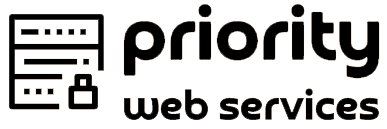Sharing is caring!
Differences Between Domain & Website
When you’re just getting started on the Internet there are a lot of technical terms that might trip you up. Sadly, it’s hard to find any decent information that actually educates people on the basics. Since most people writing on tech topics are relative experts, it’s easy to forget about the little things you learned in the very beginning.
Below we break down the differences between a domain and a website, so you can move on with setting up your very first website.
What Is a Website?
A website is a collection of web pages on the world wide web (what you know as the Internet), that lives on a certain domain name.
Your website is actually more like a living entity. It’s based upon the relationship between your site files, your web host, and your domain name. If any one of these three aren’t working, your website won’t display.
The bulk of your website will be comprised of web pages, which are documents written in a variety of web languages, usually HTML, CSS, and some form of JavaScript. These act as instructions for the web browser for how your website will actually display.
What Is a Domain?
For users wanting to access your website they need to type in your domain name, also known as your web address. Computers communicate using something called an IP address, which looks something like this: 192.168.1.1. If you type in the IP address that’s associated with your domain name you’ll end up seeing the same exact result as what you would see if you typed in your domain name in your web browser.
It’s highly unlikely anyone will remember a random string of numbers, so your domain name serves as a more user-friendly version of your IP address. Your domain acts as an easy to remember way for your visitors to access your website.
There are two parts of your domain name: the TLD (top level domain) and the actual domain name. The TLD is the part of the domain name that follows the bulk of your domain.
For the domain name prioritywebservices.com, .com is the TLD. When choosing your domain you’ll notice there are a number of generic top-level domains (i.e. .com, .org, .biz) available. They all have different connotations, so make sure you choose wisely. If you’re interested in more information about top-level domains, then check out this post.
What is a Root Domain?
The root domain is the main web address including the TLD (i.e: prioritywebservices.com)
What is a Second-Level Domain?
A second level domain is the site name (i.e: prioritywebservices) before the TLD extension (i.e. .com, .org)
How to Register a Domain
While every domain registrar has their own process, registering a domain name with PriorityWebServices is easy. Just follow these simple steps:
- Visit prioritywebservices.com
- Search to see if your domain name is available, if it isn’t, try a slightly different variation
- Select the domain you want, and complete your checkout
The best domain names are a blend of creativity and originality. This will ensure your website is unique and memorable.
How They Work Together
As you can see from above, your website and your domain and intricately tied. You need both, along with a web host, for anything to be available to your visitors.
The next steps after you have created your new domain would be to get the word out and this post is a wonderful guide on how to get your first 1000 visitors to your website.
Your domain name points to your web server where all of your files are hosted and those files are generated when a user types in your domain name to display your website. Got it?




